Top speed 880 km/h Length 4.27 m First flight September 12, 1945 | Wingspan 12 m Retired 12 September 1945 | |
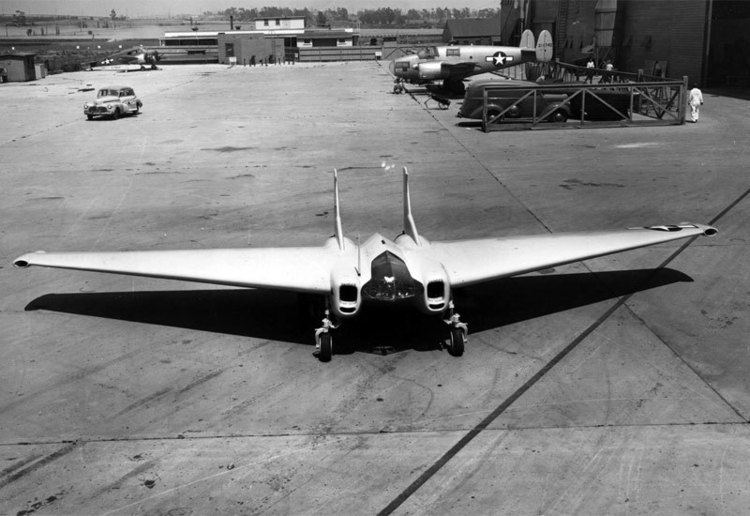 | ||
Engine types Turbojet, Westinghouse J30 | ||
Rs models 1 72 northrop xp 79b flying ram 92111 www emodels co uk
The Northrop XP-79 was an ambitious design for a flying wing fighter aircraft, designed by Northrop. It had several notable design features; among these, the pilot would operate the aircraft from a lying position, permitting the pilot to withstand much greater g-forces in the upward and downward direction with respect to the plane – and welded magnesium monocoque structure instead of riveted aluminum.
Contents
- Rs models 1 72 northrop xp 79b flying ram 92111 www emodels co uk
- Design and development
- Testing
- Specifications XP 79B
- References
Design and development
In 1942, John K. Northrop conceived the XP-79 as a high-speed rocket-powered flying-wing fighter aircraft.
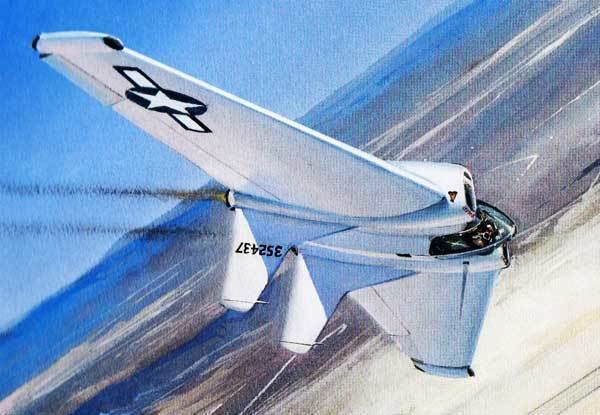
In January 1943, a contract for two prototypes (s/n's 43-52437 & 43-52438) with designation XP-79 was issued by the United States Army Air Forces.
To test the radical design, glider prototypes were built. One, designated MX-324, was towed into the air on 5 July 1944 by a P-38, making it the first US-built rocket-powered aircraft to fly.
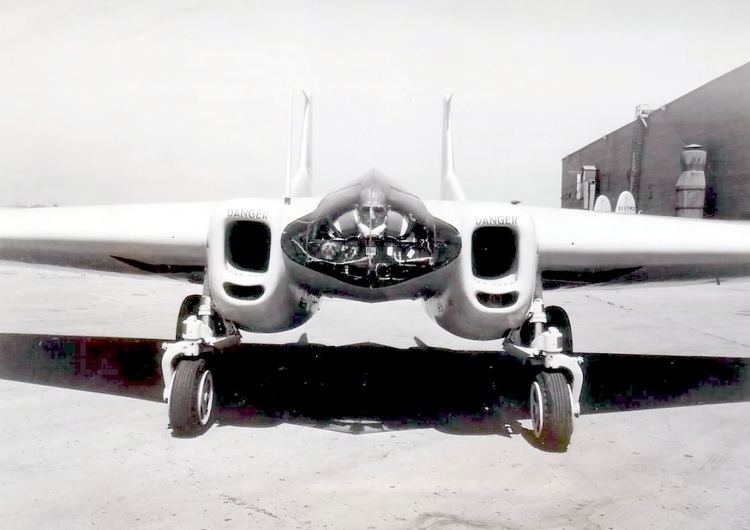
Originally, it was planned to use a 2,000 lbf (9 kN) thrust XCALR-2000A-1 "rotojet" rocket motor supplied by Aerojet that used monoethyl aniline and red fuming nitric acid; because of the corrosive and toxic nature of the liquids, the XP-79 was built using a welded magnesium alloy monocoque structure (to protect the pilot if the aircraft was damaged in combat) with a ⅛ in (3 mm) skin thickness at the trailing edge and a ¾ in (19 mm) thickness at the leading edge. However, the rocket motor configuration using canted rockets to drive the turbopumps was unsatisfactory and the aircraft was subsequently fitted with two Westinghouse 19-B (J30) turbojets instead. This led to changing the designation to XP-79B. After the failure of the rocket motor, further development of the first two prototypes ended.
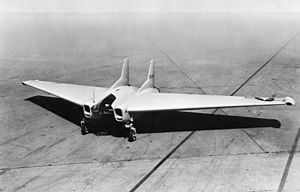
The pilot controlled the XP-79 through a tiller bar and rudders mounted below; intakes mounted at the wingtips supplied air for the unusual bellows-boosted ailerons.
Testing
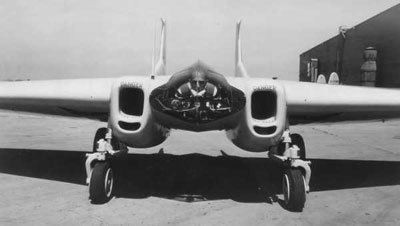
The XP-79B (after delays because of bursting tires and brake problems on taxiing trials on the Muroc dry lake) was lost during its first flight on 12 September 1945. While performing a slow roll 15 minutes into the flight, control was lost for unknown reasons. The nose dropped and the roll continued with the aircraft impacting in a vertical spin. Test pilot Harry Crosby attempted to bail out but was struck by the aircraft and fell to his death. Shortly thereafter, the second prototype (43-52438) and the overall project was cancelled.
Specifications (XP-79B)
Data from
General characteristics
Performance
Armament
